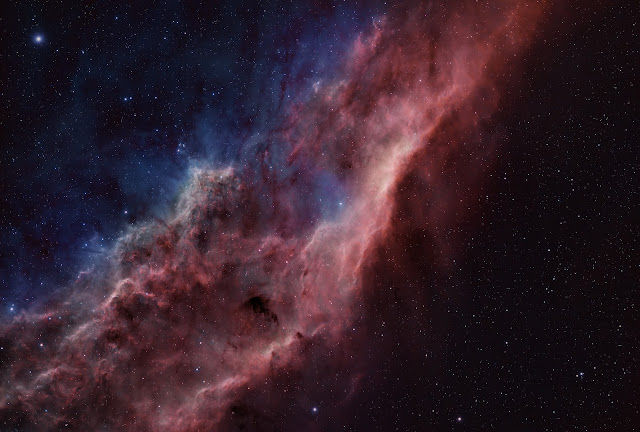An unfinished project, no doubt something bigger & brighter caught my attention and this project was left on the shelf. The teddy Bear Nebula or SH2-171 is an HII emission nebula and star forming region approx 3000 light years away in the constellation of Cepheus. A very young cluster of stars designated Berkeley 59 located just off centre in the 2 o'clock position is only a few million years old and is the primary source for the nebula. Stellar winds have shaped and eroded columns & pillars of gas to create this wonderful region. The brightest almost central star in the image is not associated with the nebula at 317 light years away.
As always this image was captured with the ED100 and the ASI 294 Mc Pro with 10 x 5 minute sub exposures controlled by the ASI Air pro micro computer





